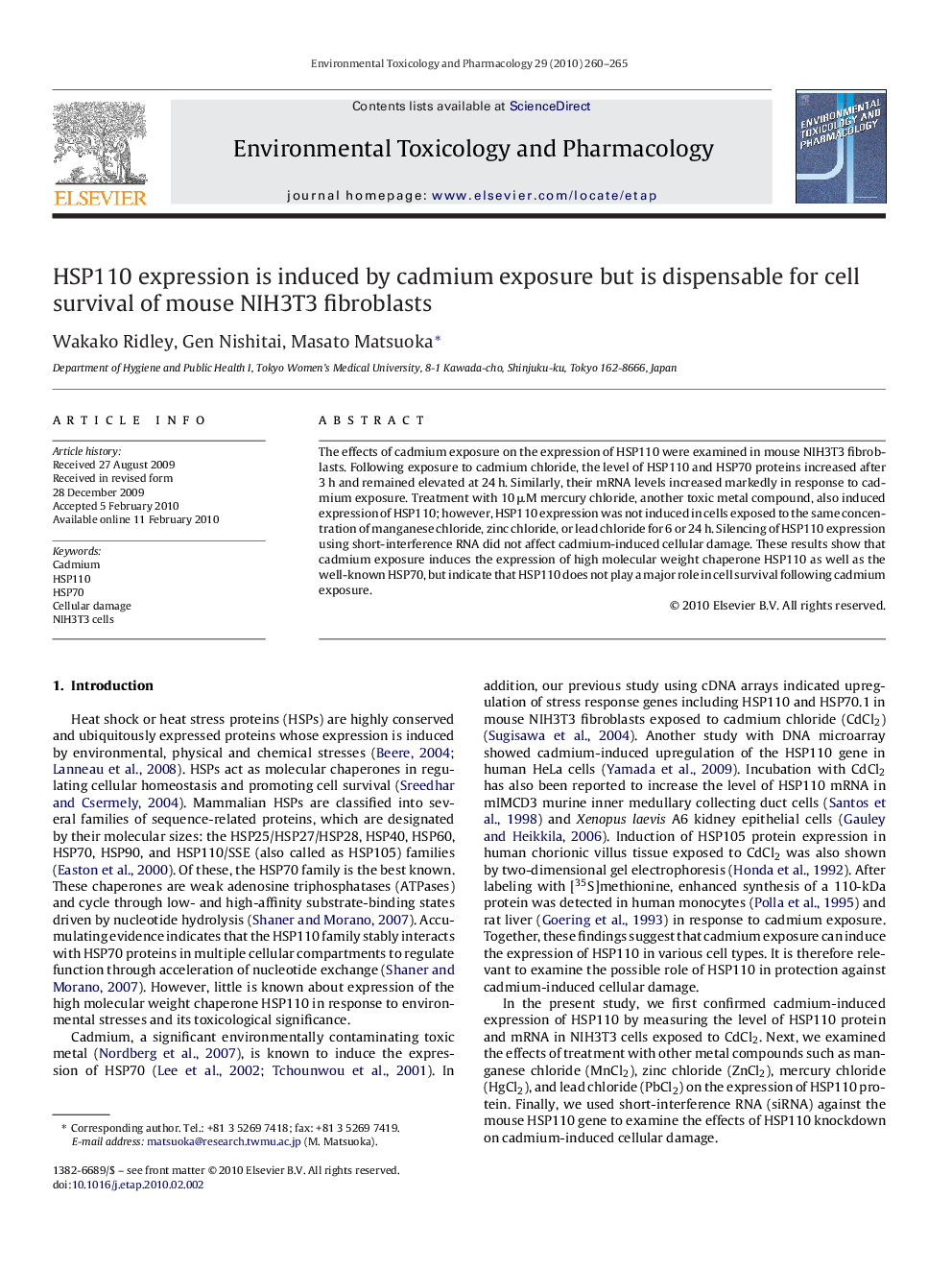| Article ID | Journal | Published Year | Pages | File Type |
|---|---|---|---|---|
| 2583540 | Environmental Toxicology and Pharmacology | 2010 | 6 Pages |
The effects of cadmium exposure on the expression of HSP110 were examined in mouse NIH3T3 fibroblasts. Following exposure to cadmium chloride, the level of HSP110 and HSP70 proteins increased after 3 h and remained elevated at 24 h. Similarly, their mRNA levels increased markedly in response to cadmium exposure. Treatment with 10 μM mercury chloride, another toxic metal compound, also induced expression of HSP110; however, HSP110 expression was not induced in cells exposed to the same concentration of manganese chloride, zinc chloride, or lead chloride for 6 or 24 h. Silencing of HSP110 expression using short-interference RNA did not affect cadmium-induced cellular damage. These results show that cadmium exposure induces the expression of high molecular weight chaperone HSP110 as well as the well-known HSP70, but indicate that HSP110 does not play a major role in cell survival following cadmium exposure.
